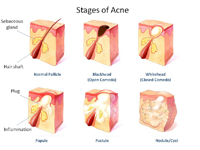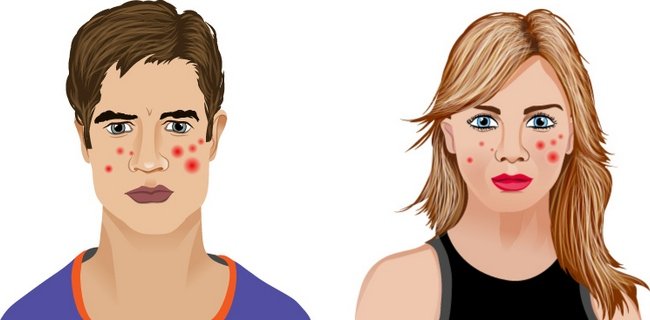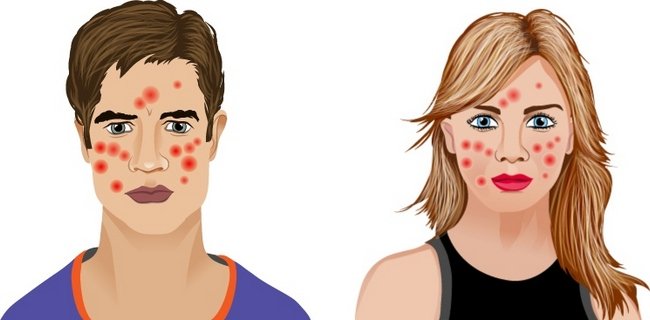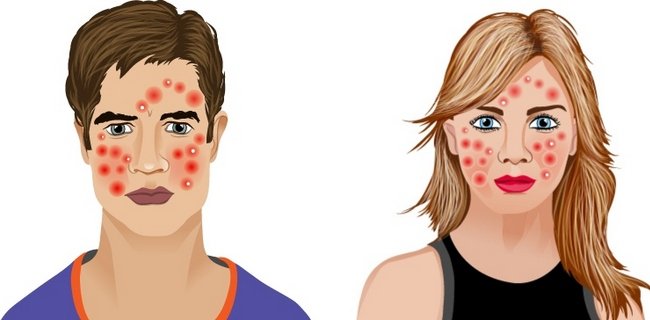Stages of Acne
 Acne has stages, which you might be unaware of. Many understand what acne is. They may even know about the types: acne vulgaris, acne fulminans, acne conglobata, solid facial edema, acne mechanica, drug induced acne, occupational acne, cholracne, neonatal, and topical acne.
Acne has stages, which you might be unaware of. Many understand what acne is. They may even know about the types: acne vulgaris, acne fulminans, acne conglobata, solid facial edema, acne mechanica, drug induced acne, occupational acne, cholracne, neonatal, and topical acne.However, most consider any blemish, pimple or zit just acne without a type and even without a stage. There are 4 stages of acne, which can require different treatment levels to clear up.
Stage One: Mild Acne
Stage one of acne is usually a small presentation of whiteheads or blackheads, or a combination of both on the skin. Inflammation is not usually associated with it and it does not happen on a daily basis.
Over the counter products like benzoyl peroxide or salicylic acid creams can treat it and clear it up. However, if it is not cleared up or treated properly then it can lead to grade 2.
Stage Two: Moderate Acne
Stage two of acne is the most common form of acne we tend to see. It occurs on both men and women at any age. Blackheads, pustules, papules, and whiteheads can form on the skin. It occurs with more frequency and with more redness or inflammation around the affected area. For women this is often linked with their menstrual cycle.
Over the counter creams including glycolic acid and the two aforementioned options can often make the condition manageable. Monthly treatments like chemical peels, facials, and light therapy have also been known to help. Worrying and picking at the acne can lead to scarring or other damage. It can also become stage 3 acne if not treated early enough. If the problem does not improve a dermatologist might well be required.
Stage Three: Severe Acne
Inflammation is centre when it comes to stage three of acne. The area is red, sore, and inflamed. The cysts, papules and even nodules can be present.
Proper treatment can reduce the risk of scarring and clear up the trouble. It can take a full year for improvements if you do not seek treatment early enough or before stage three begins.
Stage Four: Nodulocystic or Cystic
Cystic or Nodulocystic Acne is the worst type you can have. It is extremely painful and sore with numerous pustules, cysts, papules, and nodules in the affected area or on various body parts. The acne is deep, going into the cellular layer of the skin. Typically, the nodule will not develop a head that can be drained. Instead, the acne will need to be drained by a professional even excised in severe cases. Sometimes steroids are injected to reduce the infection.
Prescriptions are used at this stage. Scarring is almost a foregone conclusion, which may or may not be reversed by cosmetic treatments. With proper treatment and a dermatologist's help, grade 4 can be cleared up and never return.
It is a matter of whether you take your skin care seriously and adapt your way of eating, stress, and other causes of acne to prevent moving from grade one to more severe cases of acne.
Even if it's first or second stage, it's time to think about acne treatment. But which method to choose? There are different techniques, each has pros and cons. You can compare acne treatment methods and choose the best technique:

